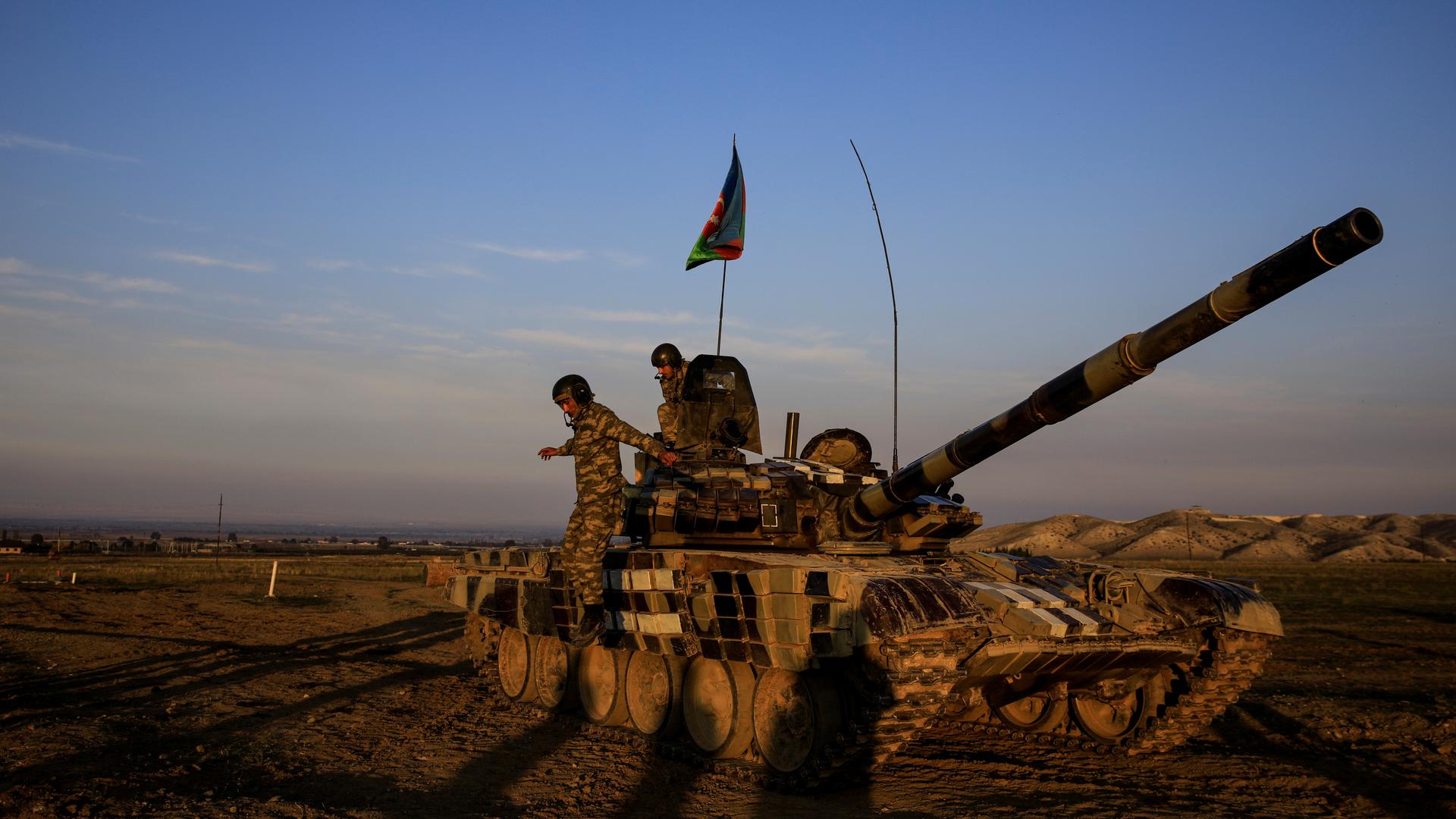Azerbaijan’s army continues to liberate its territories occupied for nearly 30 years by Armenian forces.
“During the day on October 23 and on the night of October 24, the combat operations continued with varying intensity in the Aghdara, Khojavend, Fuzuli, Hadrut and Gubadli directions,” Azerbaijan’s Defence Ministry said in a statement on Saturday.
Units of its military continue to carry out operations in certain directions of the front, it added.
“Armenian armed forces units, which could not resist in the Khojavend, Fuzuli, and Gubadli directions of the front, have been inflicted by the fire strike,” the army said.
During operations, Azerbaijan said it disabled Armenian weapons, ammunition and fuel depots, some occupying forces retreated from their positions.
“Several enemy strongholds were destroyed and important high grounds were liberated. Currently, combat operations are being carried out along the entire length of the front. Our troops control the operational situation,” the ministry said.
US wades in cautiously to peace effort
The Trump administration waded cautiously on Friday into international efforts to halt fighting.
Secretary of State Mike Pompeo met separately in Washington with the foreign ministers of both countries in a bid to promote a ceasefire in hostilities.
The State Department said Pompeo had emphasised to Armenian Foreign Minister Zohrab Mnatsakanyan and Azerbaijani Foreign Minister Jeyhun Bayramov the need “to end the violence and protect civilians”.
“Both must implement a ceasefire and return to substantive negotiations,” Pompeo said in a tweet after his talks.
Friday’s meetings followed failed Russian-led attempts to broker a truce and lower-profile US intervention to promote an end to the fighting.
US officials, including Pompeo’s deputy, Stephen Biegun, have appealed for the countries to return to a dialogue over the territory.
Russia, along with the United States, has co-chaired the so-called Minsk Group set up by the Organization for Security and Cooperation in Europe (OSCE) to mediate in the conflict.
In his meetings, Pompeo “also stressed the importance of the sides entering substantive negotiations under the auspices of the OSCE Minsk Group Co-Chairs to resolve the conflict based on the Helsinki Final Act principles of the non-use or threat of force, territorial integrity, and the equal rights and self-determination of peoples”, the State Department said.
Putin said Russia is doing its best to negotiate a lasting truce.
He voiced hope that the United States would work cooperatively to help end hostilities and mediate a political settlement.
READ MORE: Azerbaijan: Military ops to retake Armenian-occupied areas ongoing
Upper Karabakh conflict
Relations between the two former Soviet republics have been tense since 1991, when the Armenian military occupied Upper Karabakh.
Four UN Security Council resolutions and two from the UN General Assembly, as well as international organisations, demand the “immediate complete and unconditional withdrawal of the occupying forces” from Azerbaijani territory.
In total, about 20 percent of Azerbaijan’s territory, including Nagorno-Karabakh and seven adjacent regions, has been under illegal Armenian occupation for nearly 30 years.
The OSCE, co-chaired by France, Russia, and the US, was formed in 1992 to find a peaceful solution to the conflict, but to no avail.
A ceasefire, however, was agreed to in 1994.
World powers, including Russia, France, and the US, have called for a new ceasefire.
Turkey, meanwhile, has supported Baku’s right to self-defence and demanded the withdrawal of Armenia’s occupying forces.










Discussion about this post